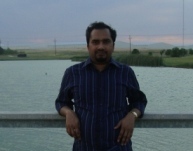With the World Bank setting an international poverty line and the Indian Planning Commission setting another benchmark, the notion of poverty line has often been a source of confusion in India. And now another concept of poverty, introduced by the ministry of rural development has added to the confusion. The ongoing debate around the poverty line has caught momentum with the government's declaration to conduct the below poverty line (BPL) census 2011. Since the very definition of the National Poverty Line has been questioned by many, including the Supreme Court of India in April 2011, it needs to be redefined.
Despite India's consistent economic growth for almost two decades, the country records a staggering rate of poverty. According to the UN Human Development Report (2009), with the poverty line of $2.00 a day, more than 75% of Indians are poor. However, conservative estimates pull the poverty rate down. For instance, considering a daily expenditure of $1.25, the poverty figure gets reduced by half. The UNDP report (2007) estimates that about 28% of Indians are below the national poverty line. The question here is why this fluctuation? How does the number of poor persons change so wildly in different estimates?
This is a pure number game. To understand the dynamics of this game, we have to delve deeper as to know how poverty is defined. According to the Planning Commission, per capita urban spending of (INR) ₹ 578 (~$13) or rural expenditure of ₹ 450 (~$10) a month is the poverty line. Any spending below this line will categorize a person as poor enough to be eligible to receive welfare benefits.
This criterion has, however, been widely criticized as it fails to capture even the barest human needs. With a daily consumption of ₹ 15 -20, one cannot sustain a life with dignity anywhere in India. As conservative estimates pull the poverty rate down, there is an incentive for the government to lower the poverty line. So there needs to be widespread discussion regarding the definition of national poverty line.
I am taking a very modest approach to define poverty from a layman's perspective. In my view, life comes first, numbers come later. I am sure everyone would agree that the barest notion of life - with human dignity - must include food, clothing, shelter, and medicines Â- when required. Keeping this in mind let me walk you through the life of a poor man (PM) and see how we can define the poverty line.
What is the first thing you need, Mr PM, in the morning? A cup of tea (I am sure you can't afford coffee, right?) to freshen you up! Do you take breakfast, too? Well, you must. Okay, I am giving you only ₹ 4 for both tea and breakfast. If you don't take breakfast in the morning, then just take a tea and save the rest for an afternoon snack, without which you won't be able to toil the whole day. So it seems you will need ₹ 120 for the whole month.
Mr PM, I can allow you only two plain meals a day. Nothing more, no lavishness. How much does a meal cost you? I think the simplest meal, if you cook for yourself, is going to cost you ₹ 7 - 8 . For two meals you need another ₹ 15 a day. You will end up spending ₹ 450 a month for meals. I know, you can't have it for less.
What else do you need? For your daily maintenance you will need stuffs like oil, soap, kerosene, and anything else Â- I can allow you another ₹ 5 . In thirty days you need ₹ 150, at the least, isn't it? How about medicines? Well Â- you can't afford to get sick always! So I will allow you a medical expense of only ₹ 50 a month.
(Note: You can view every article as one long page if you sign up as an Advocate Member, or higher).





